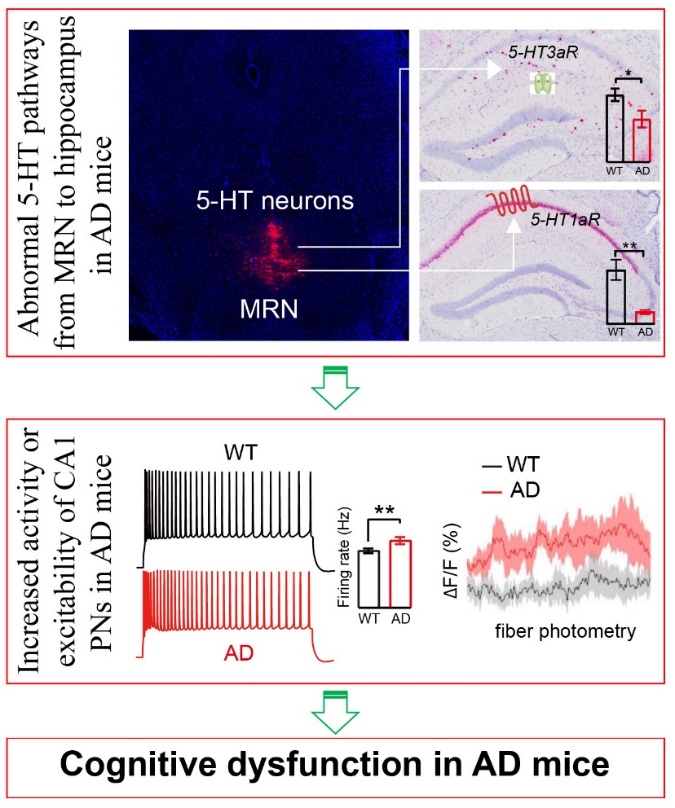The team led by Prof. Binggui Sun recently published an article titled Aberrant serotonergic signaling contributes to the hyperexcitability of CA1 pyramidal neurons in a mouse model of Alzheimer’s disease on Mar. 28, 2023, Beijing time. This study identifies new pathways accounting for hyperexcitability of CA1 pyramidal neurons in AD mice.
Hyperactivity of pyramidal neurons (PNs) in CA1 is an early event in Alzheimer’s disease (AD). However, factors accounting for the hyperactivity of CA1 PNs remain to be completely investigated. In the present study, the authors report that the serotonergic signaling is abnormal in the hippocampus of hAPP-J20 mice. Interestingly, chemogenetic activation of serotonin (5-hydroxytryptamine, 5-HT) neurons in the median raphe nucleus (MRN) attenuates the activity of CA1 PNs in hAPP-J20 mice by regulating the intrinsic properties or inhibitory synaptic transmission of CA1 PNs through 5-HT3aR and/or 5-HT1aR. Furthermore, activating MRN 5-HT neurons improves memory in hAPP-J20 mice and this effect is mediated by 5-HT3aR and 5-HT1aR. Direct activation of 5-HT3aR and 5-HT1aR with their selective agonists also improves memory of hAPP-J20 mice. Together, this study identifies the impaired 5-HT/5-HT3aR and/or 5-HT/5-HT1aR signaling as pathways contributing to the hyperexcitability of CA1 PNs and the impaired cognition in hAPP-J20 mice.
Prof. Binggui Sun from Zhejiang University School of Medicine is the leading corresponding author. Jing Wang, Yufei Mei and Xiaoqin Zhao are the co-first authors. This work was supported by grants from National Key R&D Program of China (2021YFA1101701, 2019YFA0110103), National Natural Science Foundation of China (32071031, 32271028, 31871025, 82071182, 82201351) and Natural Science Foundation of Zhejiang Province (LZ19C090001).

Abnormal serotonergic pathways from the median raphe nucleus (MRN) to the hippocampus contribute to the hyperexcitability of CA1 pyramidal neurons and then lead to cognitive dysfunction in AD mice.




 Location :
Location : 

